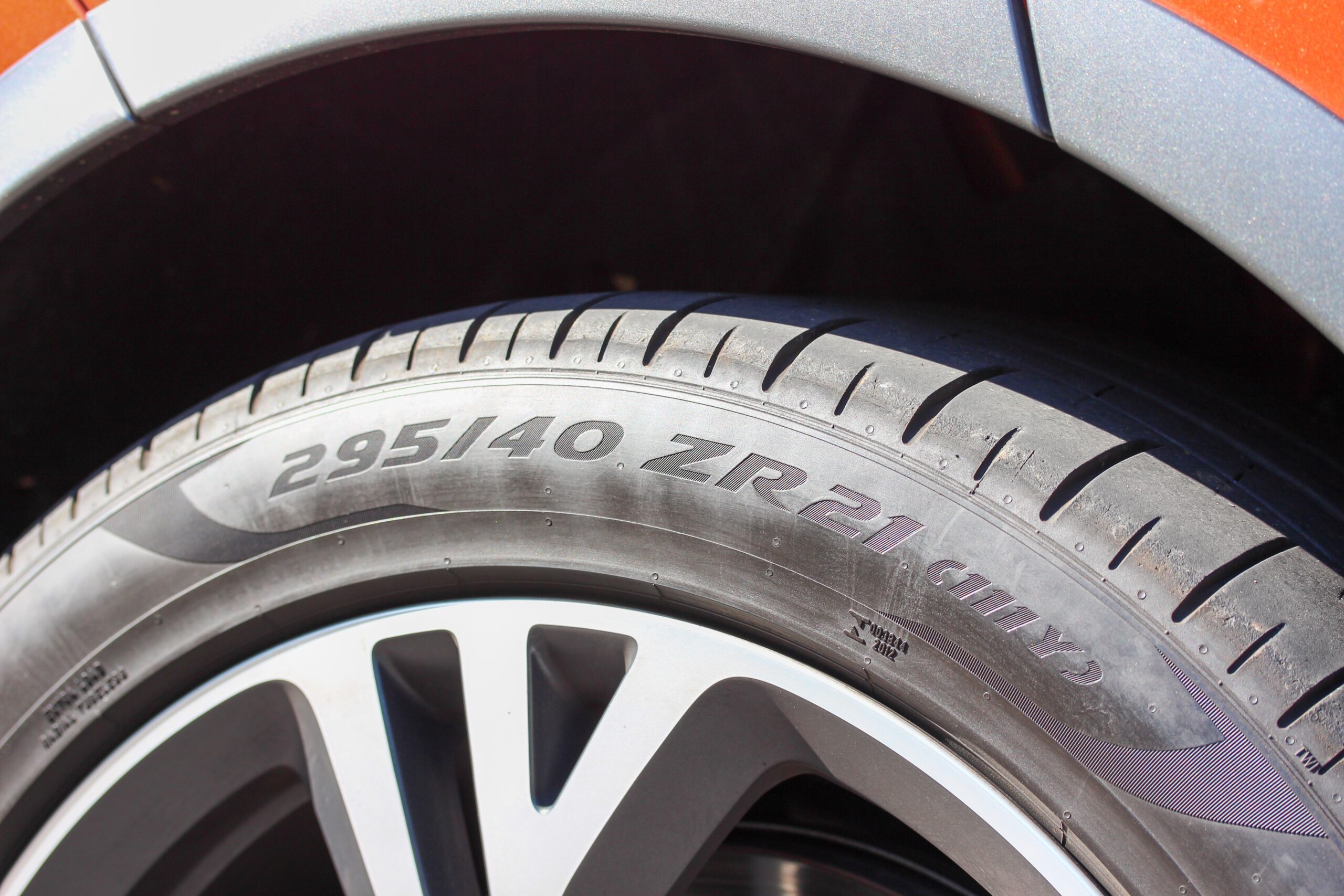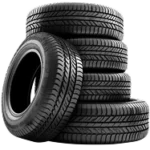What Is Tire Speed Rating?

When you think about tire safety and performance, your mind may go to tread depth or tire pressure, but speed rating is just as important. A tire’s speed rating tells you the maximum speed a tire can safely handle over time. Knowing your tire speed rating can help you make safer, more informed decisions on the road, whether you’re on your daily commute or taking longer drives.
In this guide, you’ll get everything you need to know about tire speed ratings: what they are, how they’re tested, how to find yours, and how to choose the right one for your vehicle and driving needs.
What Is a Tire Speed Rating?
A tire speed rating is a standardized measurement that indicates the maximum speed a tire can sustain safely under specified conditions. This rating, represented by a letter, is part of the alphanumeric code printed on your tire’s sidewall. This code is known as the tire’s service description or tire description, and it includes important numbers and letters that detail the tire’s specifications, such as speed rating, load index, and other features. Each letter corresponds to a maximum speed, and these ratings are established through rigorous testing. For example, the letter “H” equates to 130 miles per hour (mph). When breaking down the example code, each number in the code provides specific information about the tire’s characteristics, such as section width or load index.
However, the speed rating doesn’t just affect how fast you can go. The speed rating is not a recommended speed to be driven at regularly, but rather the maximum safe speed under ideal conditions. This rating also influences how your vehicle handles, how tires respond to heat, and how they wear over time. That’s why understanding your tire’s speed rating is essential for both performance and safety.
How Tire Speed Ratings Are Measured
The Speed Test Process
Tire manufacturers follow strict testing standards to determine a tire’s speed rating. The test is performed under controlled conditions to assess the tire’s speed capabilities accurately. In a controlled lab setting, tires are mounted on a testing machine and gradually accelerated to their intended top speed. During the test, the tire must perform without failure, meaning no excessive deformation, tread separation, or overheating.
This test simulates the stress a tire would undergo at highway speeds over long distances. It’s not just about whether the tire can hit a certain speed, but whether it can sustain it safely and consistently.
Where to Find Your Tire’s Speed Rating
You can find your tire’s speed rating right on the sidewall as part of the tire size designation, which includes both numbers and letters. Look for a code like P225/45R17 91 H. This is an example of a tire size, and the size designation provides key information about the tire’s specifications. That final letter, which in this example is “H,” is the speed symbol indicating your speed rating. For certain high-speed tires, additional markings, including ‘ZR’ or a speed symbol in brackets, must be included in the size designation to indicate maximum speed capabilities.
Here’s a breakdown of the example code:
- P = Passenger vehicle tire
- 225 = Tire width in millimeters
- 45 = Aspect ratio (height to width)
- R = Radial construction
- 17 = Diameter in inches
- 91 = Load index
- H = Speed symbol (speed rating)
The Speed Rating Letters & What They Mean
When shopping for new tires, there is a range of speed ratings available to choose from. The chart below shows the most common tire speed ratings for different vehicle types—see the chart to identify the maximum speed capability of each letter:
| Speed Rating | Max Speed |
| Q | 99 mph |
| R | 106 mph |
| S | 112 mph |
| T | 118 mph |
| U | 124 mph |
| H | 130 mph |
| V | 149 mph |
| W | 168 mph |
| Y | 186 mph |
| Z | 149+ mph |
T-rated tires (118 mph) are common for family sedans and minivans, while H-rated tires (130 mph) are often found on sports sedans and coupes. V-rated tires (149 mph) are used for higher-performance vehicles, and W (168 mph) and Y (186 mph) ratings are typically found on sports cars and other high-performance vehicles. ZR is used for tires rated above 149 mph, including those with a Y symbol for speeds above 186 mph. Light trucks may use specific ratings, so always match the tire’s speed rating to your vehicle’s requirements.
Keep in mind that real-world road conditions, such as weather, tire inflation, and load, can affect the actual safe speed, even if the tire’s speed rating is higher. Always choose the right speed-rated tire or speed-rated tires for your vehicle’s needs to ensure safety and performance.
Why Tire Speed Ratings Matter
More than just about top-end speed, tire speed ratings are crucial for vehicle safety and performance. A tire with the correct speed rating offers better grip, more reliable handling, and greater resistance to heat buildup at highway speeds. Ensuring the speed rating matches your vehicle means the tire’s capabilities are properly aligned with your car’s performance needs.
Before standard speed ratings were implemented, tires frequently failed under stress, resulting in blowouts, rapid wear, and even accidents. Today’s ratings help ensure that each tire meets minimum safety and durability benchmarks, reducing the risk of failure and improving overall driving confidence.
Driving Safety at Higher Speeds
Tires with higher speed ratings are typically made with stronger materials and more advanced construction. They’re designed to handle more heat, respond faster to steering inputs, and maintain stability at higher speeds. This can lead to a more comfortable and controlled ride, especially in performance vehicles. High-performance cars are specifically engineered to take advantage of these higher speed ratings, ensuring optimal safety and performance.
How to Choose the Right Speed Rating
Daily Driving vs. Performance Needs
Your ideal tire speed rating depends on how and where you drive. If you primarily use your car for daily commuting and city driving, a moderate speed rating like T or H might be sufficient. These tires strike a balance between safety, comfort, and longevity.
T and H ratings are common for family vehicles and sedans, while higher ratings like V and W are often found on coupes and light trucks.
If you drive a sports car or spend a lot of time on highways, a higher rating, such as V or W, may be more suitable. These tires offer enhanced handling and heat resistance, which are essential for sustained higher speeds.
Can You Use a Lower or Higher Rating?
Using a lower speed rating than recommended by your vehicle manufacturer can be risky. It may lead to premature tire wear, reduced handling capability, or even failure at high speeds.
In contrast, using a higher speed rating is typically safe, although it may not offer significant benefits unless your driving style or vehicle performance demands it. Keep in mind that higher-rated tires often have a shorter tread life and may cost more.
Tire Rating FAQs
What happens if I exceed my tire’s speed rating?
Exceeding your tire’s speed rating can cause excessive heat buildup, which may lead to tread separation, blowouts, or tire failure. It’s unsafe and should be avoided.
Are higher speed ratings always better?
Not necessarily. Higher-rated tires offer better performance but may wear out faster and ride more firmly. Choose the tire rating based on your driving style and vehicle type.
Can mismatched speed ratings on tires cause issues?
Yes. Mismatched speed ratings can lead to uneven wear and inconsistent handling. It’s best to match all four tires for optimal performance and safety.
Do winter tires have different speed ratings?
Winter tires often have lower speed ratings due to their softer rubber compounds, which are designed for traction in cold conditions, not high-speed performance.
Need Help Picking the Right Tires?
Still unsure which speed rating is right for your vehicle? Don’t worry, because Telle Tire & Auto Centers is here to help. Our experts can walk you through tire codes, performance options, and safety considerations so you can drive away with confidence. Having a greater understanding of your tire’s codes and ratings will help your overall vehicle safety.
Shop the largest selection of brand-name tires and take it to Telle in St. Louis, Kansas City, Springfield, MO, or Jefferson City, MO. Schedule your new tire installation with our certified experts today.

Take it to telle
Stay Safe with a Tire Check from Telle Tire
Worried about your tread depth or tire condition heading into the summer storm season? Take it to Telle. Our expert technicians can assess your tires, check pressure levels, and recommend replacements when necessary, helping you stay in control regardless of the weather conditions. Stay safe, stay prepared, and if you’re unsure about your tires, schedule a visit with your nearest Telle Tire & Auto Centers location today.
Stay Informed
Recent Articles from Telle Tire

What Happens to Your Car When You Delay Scheduled Maintenance
It’s easy to push routine car maintenance down the to-do list. Oil changes, wheel alignments, tire rotations, fluid checks, battery tests, and suspension inspections often feel…

Winter Driving in Missouri: Top 7 Mistakes Drivers Make & How to Avoid Them
Winter in Missouri is anything but predictable. Drivers can experience early-season frost, freezing fog, sudden snow bursts, black ice on bridges, and wide temperature swings, sometimes…

Top Scenic Drives in Missouri This Winter
Winter transforms Missouri into a stunning landscape of snow-covered forests, frosted bluffs, quiet river valleys, and peaceful state parks. Whether you’re near St. Louis or Kansas…
